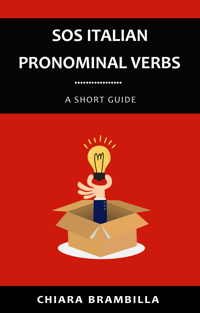
For adult learners of Italian, improving pronunciation can often feel like an uphill battle. The sounds and rhythms of the language may seem tricky, especially if your native language is vastly different from Italian. However, one of the most effective and enjoyable ways to refine your Italian pronunciation is through the use of canzoni (songs), filastrocche (nursery rhymes) and giochi di parole (word games), particularly tongue twisters. These short and often humorous phrases may seem simple, but they can significantly improve your articulation, fluency, and confidence when speaking Italian.
In this article, I’ll tell you why tongue twisters are so effective for language learners and highlight some of the most famous Italian tongue twisters, complete with English translations. By incorporating these into your practice, you’ll not only have fun but also sharpen your Italian pronunciation skills.
Why Tongue Twisters Help Improve Pronunciation
Tongue twisters are designed to challenge the articulation of sounds that are difficult to pronounce. The rapid repetition of similar sounds forces you to pay close attention to how you form each sound, which helps your brain and mouth get accustomed to producing the correct pronunciation. This repetitive practice leads to muscle memory, improving your fluency over time.
Furthermore, tongue twisters often focus on sounds that are particularly tricky for non-native speakers, such as the Italian r, gli, and ci sounds. Regular practice with these phrases can help you master these challenging sounds, leading to a more authentic Italian accent.
Popular Italian Tongue Twisters
Here are some of the most famous Italian tongue twisters, along with their English translations and explanations. These will not only help you practice Italian pronunciation but also give you a fun way to immerse yourself in the language.
1. “Trentatré trentini entrarono a Trento, tutti e trentatré trotterellando.”
English translation: Thirty-three Trentini entered Trento, all thirty-three trotting.
This classic tongue twister focuses on the Italian tr sound, which is tricky for many learners. The repetition of “trentatré” helps you practice the correct t and r sounds in quick succession. By repeating this phrase, you’ll improve your ability to articulate these consonants clearly.
2. “Apelle, figlio di Apollo, fece una palla di pelle di pollo.”
English translation: Apelles, son of Apollo, made a ball of chicken leather.
The p sound in this tongue twister appears multiple times, helping you practice the clear pronunciation of Italian consonants. Additionally, this phrase features the repetition of double consonants, and encourages you to focus on your intonation and rhythm, which are key aspects of Italian pronunciation.
3. “Sopra la panca la capra campa, sotto la panca la capra crepa.”
English translation: On the bench, the goat lives; under the bench, the goat dies.
This tongue twister focuses on the p, pr, and c sounds. It also introduces a classic Italian rhyme structure, which can help you become more familiar with the rhythm and flow of the language. Repeating this phrase will not only improve your articulation but also your sense of timing in spoken Italian.
4. “Sul tagliere gli agli taglia, non tagliare la tovaglia; la tovaglia non è aglio se la tagli fai uno sbaglio.“
English translation: On the cutting board, cut the garlic, don’t cut the tablecloth; the tablecloth is not garlic, if you cut it, you make a mistake.
This tongue twister is excellent for practicing the gli sound, which can be challenging for non-native speakers. The repetition of “gli” will help you master this sound and improve your ability to pronounce other Italian words with gli, like famiglia (family) or foglio (sheet).
5. “Eva dava l’uva ad Ava, Ava dava le uova ad Eva, ora Eva è priva d’uva mentre Ava è priva d’uova.“
English Translation: Eva gave grapes to Ava, Ava gave eggs to Eva, now Eva is without grapes while Ava is without eggs.
This tongue twister helps you improve your Italian pronunciation of vowels, and specifically of the words “uva” and “uova”, often mispronounced.
How to Use Tongue Twisters for Practice
Now that you know some of the most famous Italian tongue twisters, here are some tips on how to incorporate them into your language learning routine.
1. Start Slowly
When you first start practicing a tongue twister, go slow. Focus on pronouncing each sound clearly and accurately. Once you feel comfortable with the individual sounds, gradually increase your speed. And remember, even Italians have problems pronouncing these tongue twisters quickly!
2. Focus on Challenging Sounds
Italian has some sounds that are difficult for non-native speakers, such as the r, gli, and ci sounds. Identify which sounds are most challenging for you and focus on tongue twisters that target those sounds.
3. Practice Daily
Consistency is key. Dedicate a few minutes every day to practicing tongue twisters. You can start with just one or two and gradually add more as you improve. Daily repetition will help build muscle memory and make your Italian pronunciation sound more natural.
4. Record Yourself
Recording yourself as you practice tongue twisters can be incredibly helpful. By listening to your own recordings, you can identify areas where your pronunciation needs improvement. It’s also rewarding to hear your progress over time.
5. Make It Fun
Tongue twisters can be a bit silly, which is part of their charm. Have fun with them! The more you enjoy the practice, the more likely you are to stick with it. Plus, learning through play can help you feel more relaxed and less self-conscious when speaking Italian.
Embrace the challenge! By challenging your articulation and focusing on difficult sounds, you’ll build the confidence and skill needed to speak Italian more clearly and naturally. Incorporating these fun phrases into your daily practice will not only refine your pronunciation but also enhance your understanding of Italian rhythm and melody.
If you found this article useful, don’t forget to share it with the world and to like our Facebook Page!
Credits:
Image by Copilot





 Let’s Discover Venice
Let’s Discover Venice

